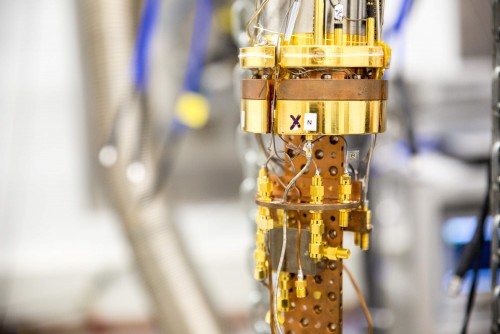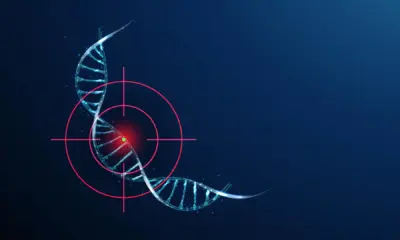Science
Time Crystals Break Ground for Future Quantum Computing Advances

A breakthrough study has connected time crystals to an external system for the first time, presenting a potentially revolutionary avenue for enhancing the power of quantum computers. Researchers from Aalto University in Finland revealed their findings in the journal Nature Communications on October 16, 2023, marking a significant step forward in quantum physics.
Time crystals, first experimentally confirmed in 2016, are unique structures that maintain a perpetual state of motion without requiring external energy. This phenomenon arises from their lowest possible energy state, enabling them to oscillate indefinitely. The concept, introduced by Frank Wilczek, a Nobel Laureate in Physics, suggests that these systems can exist in a state of time-based repetition, akin to the spatial regularity seen in traditional crystals.
In this latest research, led by Academy Research Fellow Jere Mäkinen, the team transformed a time crystal into an optomechanical system. This innovation could lead to the development of highly accurate sensors and memory systems for quantum computers, significantly enhancing their operational capabilities.
Mäkinen explained that previous attempts to connect time crystals to external systems failed due to the delicate nature of these quantum phenomena. “Perpetual motion is possible in the quantum realm as long as it is not disturbed by external energy input, such as by observing it,” he stated. “But we did just that and showed, also for the first time, that you can adjust the crystal’s properties using this method.”
The research involved manipulating magnons—quasiparticles that behave like individual particles—using radio waves to excite a Helium-3 superfluid cooled to near absolute zero. Once the energy input ceased, the magnons formed a time crystal that remained active for an impressive duration, cycling up to 10^8 times, or several minutes, before its observable motion diminished.
The significance of this connection is profound. During the fading process, the time crystal linked itself to a nearby mechanical oscillator, influenced by its frequency and amplitude. Mäkinen elaborated, “We showed that changes in the time crystal’s frequency are completely analogous to optomechanical phenomena widely known in physics. These are the same phenomena used, for example, in detecting gravitational waves at the Laser Interferometer Gravitational-Wave Observatory in the U.S.”
The implications for quantum computing are substantial. Time crystals could potentially last orders of magnitude longer than current quantum systems, offering a pathway to enhance memory systems in quantum computers significantly. Mäkinen noted, “The best-case scenario is that time crystals could power the memory systems of quantum computers to significantly improve them. They could also be used as frequency combs, which are employed in extremely high-sensitivity measurement devices as frequency references.”
The research was conducted at the Low Temperature Laboratory, part of OtaNano, Finland’s national research infrastructure dedicated to nano-, micro-, and quantum technologies. The team utilized advanced computational facilities from the Aalto Science-IT project to support their findings.
As this research unfolds, the potential applications of time crystals in quantum technology signal an exciting frontier for advancements in computing and sensing capabilities. The ability to harness such quantum phenomena may redefine our approach to technology in the coming years.
-

 Technology5 months ago
Technology5 months agoDiscover the Top 10 Calorie Counting Apps of 2025
-

 Technology2 weeks ago
Technology2 weeks agoOpenAI to Implement Age Verification for ChatGPT by December 2025
-

 Health3 months ago
Health3 months agoBella Hadid Shares Health Update After Treatment for Lyme Disease
-

 Health3 months ago
Health3 months agoAnalysts Project Stronger Growth for Apple’s iPhone 17 Lineup
-

 Health3 months ago
Health3 months agoErin Bates Shares Recovery Update Following Sepsis Complications
-

 Technology5 months ago
Technology5 months agoDiscover How to Reverse Image Search Using ChatGPT Effortlessly
-

 Technology3 months ago
Technology3 months agoElectric Moto Influencer Surronster Arrested in Tijuana
-

 Technology2 months ago
Technology2 months agoDiscover 2025’s Top GPUs for Exceptional 4K Gaming Performance
-

 Technology5 months ago
Technology5 months agoMeta Initiates $60B AI Data Center Expansion, Starting in Ohio
-

 Technology5 months ago
Technology5 months agoRecovering a Suspended TikTok Account: A Step-by-Step Guide
-

 Health5 months ago
Health5 months agoTested: Rab Firewall Mountain Jacket Survives Harsh Conditions
-

 Lifestyle5 months ago
Lifestyle5 months agoBelton Family Reunites After Daughter Survives Hill Country Floods





















